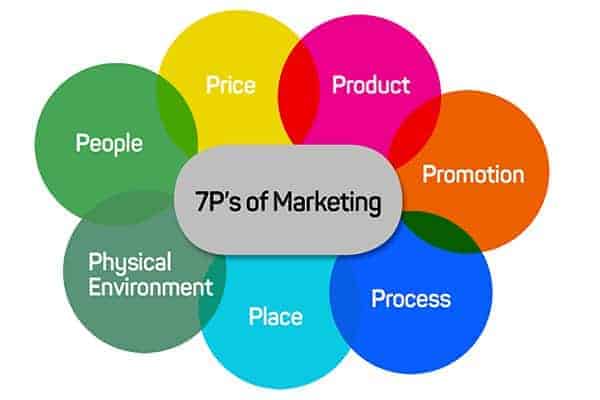
The 7 Ps of Marketing
Posted on 31st October 2016 by Katherine Ducie
What are the 7 Ps of marketing?
As a business, you need to make sure you are marketing the right product to the right person, and at the right place, time and price. However, it can be difficult to know where to start. The 7 Ps of marketing are the key areas you should focus on: product, place, price, promotion, people, process, and physical environment.
Below, you can find more information about the 7 Ps of marketing, including what they mean and how you can implement them.

1. Product
Your product should meet customer needs and there’s no one better placed to tell you what those needs are than your customers themselves. Don’t be afraid to ask what they think of your product or service – if they are satisfied, what they would alter, how their needs might change in the future. Customer feedback is key to the continuous development of your business.
Analysing the profitability of each product or service you offer is also important when it comes to understanding what direction your business should take – what support services you can offer, how the existing product could be improved and where you could add value whilst limiting costs. For help with your calculations, take a look at the 80/20 rule.
2. Place
Here, place refers to the form of distribution you use depending on the type of product or service you are marketing. If you sell through wholesalers and retailers, for example, they will each need to make a profit from the sale. This will need to be considered when pricing. Products will also need to be promoted, not just to the end customer, but to all those who stock your products as well.
3. Price
Pitching your price correctly is vitally important. You need to make a profit otherwise your business will not survive, but you need to ensure your price doesn’t put off customers either. Pricing too low may cause customers to think your product or service is low quality, but pricing too high could make the cost outweigh the benefits for them.
When working out the price of your product, start with what you would need to sell it for in order to break even, and then work upwards to add on your profit margin. Reviewing your competitors’ prices is a good way to make sure you’re not pricing yourself out of the market.
4. Promotion
The promotional marketing mix is made up of five elements:
- Advertising
- Sales promotions
- Public Relations (PR)
- Direct marketing
- Personal selling
However, the type of promotion available to you will depend on the budget you have. For example, if your budget won’t stretch to an advert during Coronation Street, then consider other avenues with a lower cost – and don’t forget to consider the technology available to you.
The key to promotions is to understand your customer. What do they read? Where do they go? Work out the quickest route to your customers and target that. Now more than ever, social media marketing is thriving – and with minimal costs attached, it can’t be overlooked.
The next three elements are fairly new to the marketing mix and were introduced following the shift to a service-led economy. Therefore, the following three P’s extend the marketing theory to intangible services rather than restricting it to tangible products.
5. People
Regardless of their individual departments and job roles, marketing is the responsibility of everyone in a service organisation. Every interaction customers have with your employees will reflect on your business – so it’s essential to make sure your people are delivering your brand’s image as intended.
6. Process
Unlike tangible products, where production often happens before the customer even decides to use your business, services are usually done with the customer present – whether that’s physically or remotely. Customers are paying for the delivery of your service, so getting it right is key. Things that can put them off include:
- Lengthy waiting times
- Slow delivery
- Failure to respond to queries
Remember to think about what your customers want, and tailor your process to exceed their expectations.
7. Physical Environment
You might not think you deliver a tangible product, but it’s unlikely any business is purely service-based without delivering physical products to the customer. Think about what they are and how you can refine them to improve your customers’ experience.
For example, here at Caunce O’Hara we provide our customers with documents. Whilst we predominantly provide a service, we also have to think about how these physical elements look and feel to the customer.
Next steps
The 7 P’s marketing mix has been around for decades – it’s tried and trusted advice that helps businesses optimise their marketing strategies. It’s not set in stone, though. Some marketers suggest two additional points, planning and partners, to make sure you’re taking advantage of future opportunities and making strategic relationships in your industry.
This marketing mix is used by experts on a day to day basis, but that doesn’t mean it’ll fit everyone perfectly. If you’re looking to improve your marketing plans, you should adapt this advice to fit your own unique business model so you can put your best foot forward. Good luck!
Sources:
https://www.caunceohara.co.uk/the-7ps-of-marketing/
https://www.smartinsights.com/marketing-planning/marketing-models/how-to-use-the-7ps-marketing-mix/
https://www.londremarketing.com/documents/LondreMarketingConsulting-NinePs.pdf

